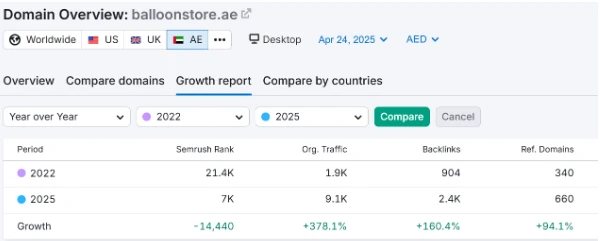Momentum Trading: Strategies & Indicators
- digitalmanqoosh
- May 16, 2022
- Uncategorized
- 0 Comments
A few momentum investors prefer to use even longer-term MAs for signaling purposes. Momentum trading strategies rely heavily on short-term market movements such as day trading and scalping. However, the duration of the trade can depend on how long the trend maintains its strength. Besides short-term trading, momentum traders focus on longer-term styles, such as position trading. The MACD indicator helps to decipher whether new trends are either bullish or bearish. The trend oscillator is calculated from price data and plotted as a time series on a graph.
- When these signals start appearing, traders open new orders or modify existing ones to benefit from the anticipated profits.
- Momentum trading is a strategy that seeks to capitalize on momentum to enter a trend as it is picking up steam.
- It would help if you backtested to find out what works and what don’t.
Over time, the profit potential increase using momentum investing can be staggeringly large. For that traders need to set up some kind of stocks scanning system (for example reversal trading strategies scanners). Worth mentioning, that momentum investing works, but not for everyone. Based on the practice of momentum investing, it can most likely lead to overall portfolio losses. When a trader buys rising stocks or sells falling stocks, it can lead to a reaction to older news than investment fund professionals. There are many momentum indicators that help us to analyse stocks having the momentum to solve this issue.
Strategy 2: Spotting divergences in price action
Momentum trading is a strategy that involves taking advantage of price volatility and strong moves in prices by buying in an uptrend and selling when that trend loses momentum. Momentum investing is often short-term, as traders are only interested in capturing a portion of a trend’s price movement. The stochastic momentum indicator is a how to start trading business variation of the stochastic oscillator, which traders use to gauge whether a stock is overbought or oversold. The readings range from -100 to 100, with 100 representing the most overbought condition. For complex trading strategies, you can even combine signals from these indicators to obtain a more reliable momentum detection algorithm.
If a trader wants to use a momentum-based strategy, he takes a long position in a stock or asset that has been trending up. Instead of the traditional philosophy of trading—buy low, sell high—momentum investing seeks to sell low and buy lower, or buy high and sell higher. Instead of identifying the continuation or reversal pattern, momentum investors focus on the trend created by the most recent price break. Momentum trading is equal parts art and science since both technical analysis skills and market feel are required for success. Even the best momentum traders won’t have a high success rate, and losers must be dealt with quickly. This strategy flies in the face of the typical “buy low, sell high” market mentality, which makes momentum trading hard to master.
Momentum trading strategies
The relative strength index (RSI) is a momentum-based indicator which provides buy and sell signals. Like the momentum indicator, it is plotted on a separate chart and is an oscillator – moving from zero to 100. The bottom line on momentum trading is that it is a higher-risk way to put money to work in the stock market.
But it’s still one of the better short-term trading strategies available to day traders. Moving averages are not an official momentum-based indicator, but rather a lagging indicator that helps to identify entry points for a momentum trader. Therefore, it is a good idea to use moving averages as part of your momentum trading strategy along with other technical indicators, such as those on this list. As a general rule, we take a long-term investment approach at The Motley Fool. Whether we’re focusing on growth or value stocks, we typically base our decisions on fundamental analysis and the underlying business.
Momentum trading summed up
You should not treat any opinion expressed in this material as a specific inducement to make any investment or follow any strategy, but only as an expression of opinion. This material does not consider your investment objectives, financial situation or needs and is not intended as recommendations appropriate for you. No representation or warranty is given as to the accuracy or completeness of the above information. IG accepts no responsibility for any use that may be made of these comments and for any consequences that result.
Momentum Trading Implementation
In technical analysis, momentum is often measured via an oscillator and is used to help identify trends. The momentum indicator is, as you might expect, the most popular momentum indicator. It takes the most recent closing price and compares it to the previous closing price, which can be used to identify the strength of a trend. Volatility is the degree of change in an asset’s price – if a market is highly volatile, it means that there are big price swings, while a market with low volatility is comparatively stable.
With our new share basket products, you can trade on multiple stocks using one single position. Our RRG® Momentum+ share baskets have been carefully measured and selected based on their display of positive momentum against a global benchmark. These include top holdings within major indices such as the UK 350, SPX 500 and NDAQ 100.
A golden cross occurs when the fast-line crosses the slow line in an upward direction (i.e. from below to above). Richard Driehaus, a famous investor, is considered as the Father of Momentum Investing and his investing techniques have become the basics of Momentum Trading. Driehaus believed in selling the losers and letting the winners ride while reinvesting the money from the losers in other stocks that were beginning to show momentum. A better way to apply the momentum strategy is in asset class rotation, such as tactically switching between the equity market and the bond market when one is performing better than the other.
They will get out and leave you and other unlucky folks holding the bag. If you do manage to time it right, you will still have to be more conscious of the fees from turnover and how much they will eat up your nfp trading returns. Yarilet Perez is an experienced multimedia journalist and fact-checker with a Master of Science in Journalism. She has worked in multiple cities covering breaking news, politics, education, and more.
Momentum traders usually buy or sell an asset moving intensely in one direction and exiting when this movement shows signs of reversing. They also seek to avoid buying or selling assets that are moving sideways. Momentum trading requires identifying the prevailing trend and then picking stocks that have the most robust momentum within that trend. For example, suppose you are bullish on the Indian stock market and would like to go long on stocks with solid momentum.
A momentum trader doesn’t necessarily attempt to find the top and bottom of a trend, but instead focuses on the main body of the price move. They aim to exploit market meme stocks sentiment and herding – the tendency for traders to follow the majority. Momentum trading carries with it a higher degree of volatility than most other strategies.
Similar to the other technical indicators on this list, it uses a moving average. The theory behind the MACD is that a short-term MA reflects current price action, whereas a long-term MA reflects current and past price action. Momentum trading is a technique where traders buy and sell financial assets after being influenced by recent price trends.












